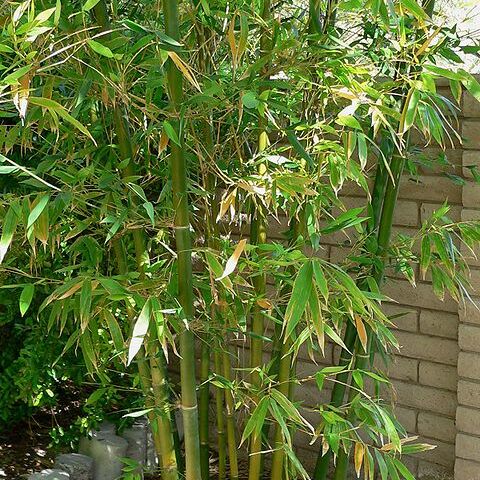Scandent or erect perennials, with pachymorph rhizomes. Culms woody and persistent, cylindrical in cross section, with 3–30 primary branches per mid-culm node. Leaves: ligule an unfringed or fringed membrane; blade rolled in bud, pseudopetiolate, sometimes crossveined (not in Australia). Inflorescences indefinite, a complex of ‘partial inflorescences’ and intervening foliar organs, with pseudospikelets solitary or in tufts or fascicles or capitula on leafless branches. Pseudospikelets laterally compressed to not noticeably compressed, disarticulating above glumes and between florets, with (1–) 2–20 bisexual florets; rachilla sometimes extended, with or without sterile florets. Glumes 1–3 (–4), very unequal or ±equal, shorter than spikelets, not pointed, awnless, keeled, 7–18-nerved. Sterile florets: lemma several-nerved. Bisexual florets: lemma usually awnless or mucronate (not in Australia), sometimes keeled, 9–22-nerved; stamens 6; ovary with conspicuous apical appendage; stigmas usually 3. Hilum long-linear.
Spikelets several-flowered, terminating short, much reduced branches of small condensed inflorescences, these approximate on the relatively slender branches of the flowering culms subtended by bract-like sheaths which are readily deciduous; inflorescence at first appearing like a single spikelet, but gradually developing short branches from the axils of the glume-like bracts, thus continuing until the inflo-rescence is a dense cluster of spikelets; glumes wanting; lemmas firm, obscurely several-nerved, acute or awn-tipped; keels of palea wingless; stamens 6. Tall erect bamboos growing in large clumps.

